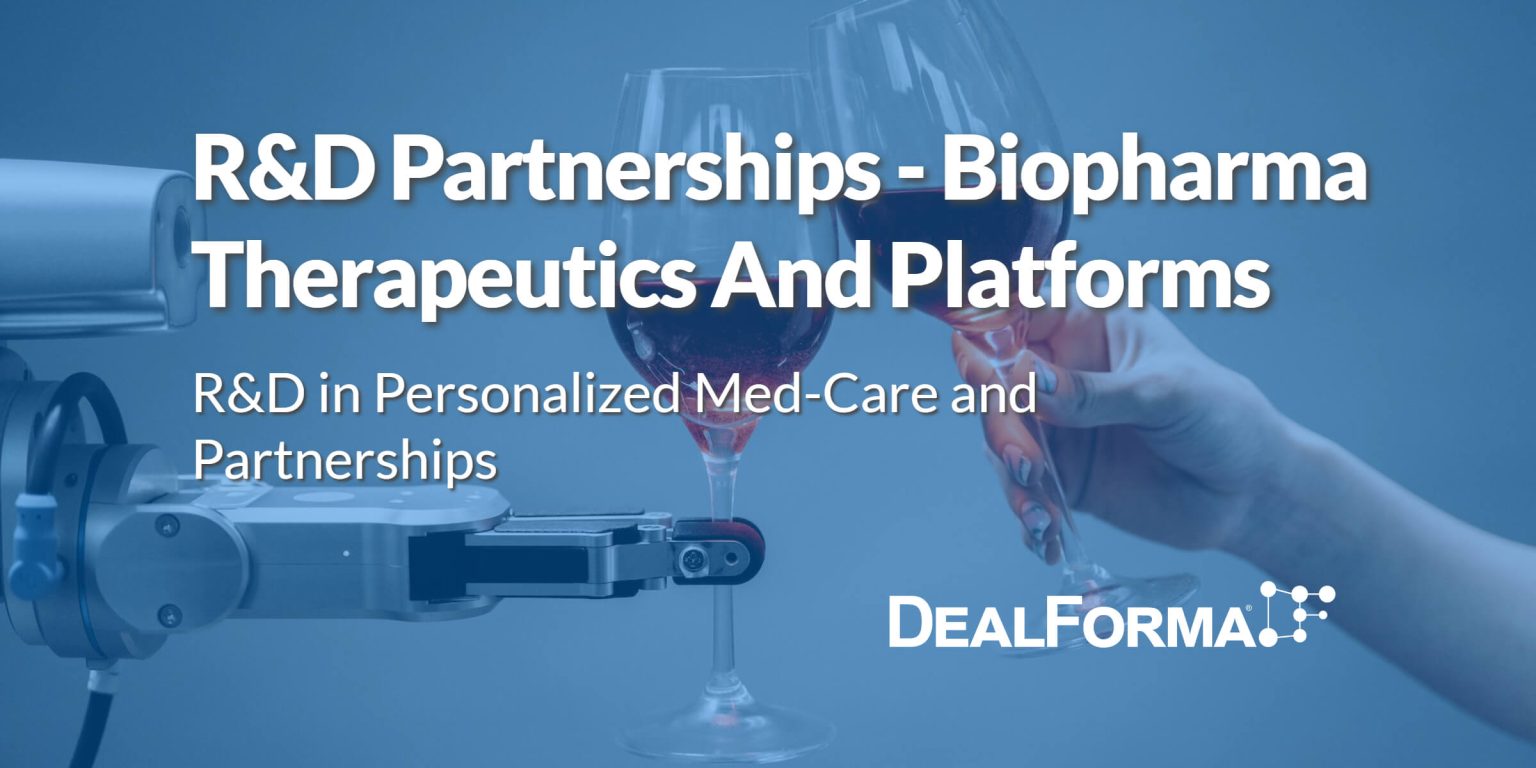R&D partnerships are common in the biopharmaceutical industry. Typically, these partnerships involve two or more companies or organizations collaborating to research, develop, and commercialize new drugs and therapeutic platforms. The objective is to combine each partner’s expertise, resources, and technology to accelerate the development of new treatments and bring them to market more efficiently. Biopharmaceutical R&D partnerships can take different forms, including strategic alliances, joint ventures, licensing agreements, and research collaborations. Despite the varying terms and objectives of each partnership, the goal is to create mutually beneficial outcomes. These outcomes can include access to innovative technologies, shared intellectual property, and cost savings through economies of scale. For instance, a biopharmaceutical company may partner with a research organization to access modern technologies for drug discovery, such as advanced genomic analysis tools. Alternatively, a biopharmaceutical company may collaborate with another company to co-develop a new therapeutic platform, such as an innovative approach to gene editing or a new method for delivering drugs to specific target tissues. In recent years, biopharmaceutical R&D partnerships have become increasingly common as companies seek to gain a competitive advantage and address the growing costs and challenges of drug development. By working together, partners can share the risks and costs of R&D and bring new treatments to market more quickly and efficiently. Ultimately, these partnerships benefit patients and advance the field of biopharmaceuticals.
Biotechnology companies usually conduct early-stage research and clinical development internally. However, the industry has observed that big pharma and biotech tend to form partnerships during later development and commercialization phases. These collaborations are crucial for long-term success since big pharma brings financial resources, expertise in later-stage development, and market access, while biotechnology companies continue to innovate and push boundaries. Based on the total announced deals from 2008 to 2022, it is evident that the Therapeutic platform and Biopharma subsectors have seen significant growth in partnerships, making it the largest sector with a 375% growth rate over the last decade. On average, these partnerships generate around 73.5 billion per year.

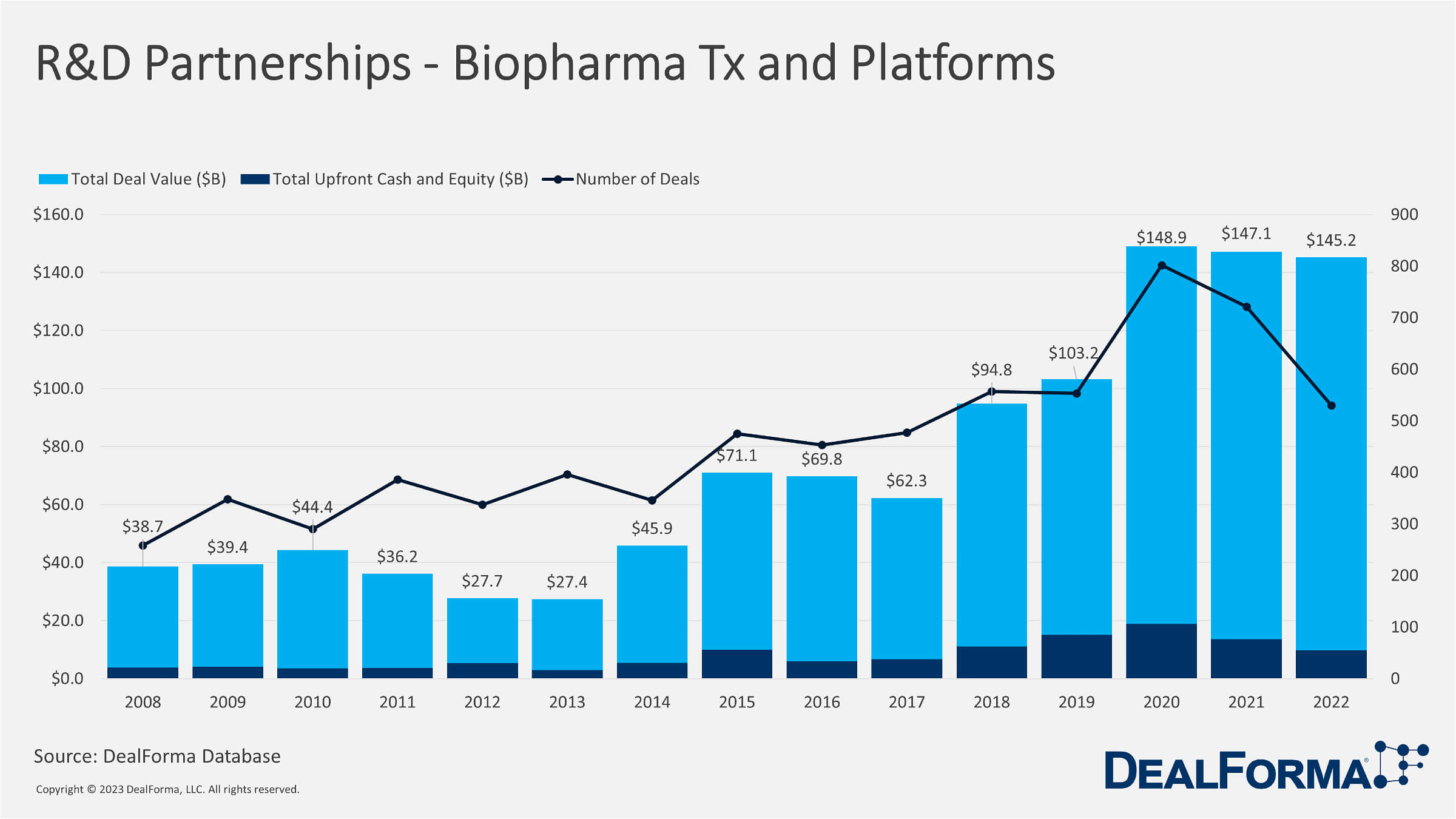
R&D In Personalized Med-Care And Partnerships
The advancement of big data, artificial intelligence, and genomic testing has brought about recent collaborations that are transforming research and development procedures for personalized medicine. By leveraging an ever-expanding pool of medical data, researchers can now create individualized therapies with greater precision and efficiency, thanks to the availability of data and advancements in computing power and AI. The global personalized medicine market is projected to reach USD 717 billion by 2025, indicating significant potential for treating various illnesses. The field of personalized medicine holds great promise for the future of healthcare, particularly in disease treatment and prevention. Leading industry players are capitalizing on this trend by developing revolutionary personalized treatment approaches. For example, AMPEL BioSolutions announced an innovative genomic platform technology in 2022 that employs RNA analytics and machine learning to analyze patients’ genes and assist medical professionals in making informed clinical decisions. This enables medical practitioners to determine the most effective course of action for each patient.
Common Partnerships In Biotechs

Partnerships have emerged as an incredibly lucrative sector, with an impressive growth trajectory in terms of total deal value. In fact, from 2017 to 2022, there has been an astounding 500% increase, taking the total value from $12.5 billion to $63.8 billion. This growth has established partnerships as a 100 million plus biopharma club, highlighting the significant opportunities in this field.
While a partnership between two or more companies typically refers to a formal agreement to join in business activities, often sharing assets, profits, and liabilities, that may not always be the case in Biopharma. In life sciences, partnerships may take a different form. Large pharmaceutical and biopharmaceutical companies frequently team up with smaller biotechnology and pharmaceutical firms, as well as academic institutions, to develop a drug candidate that displays promising potential or has already shown efficacy in preclinical studies or early clinical trials.
Partnerships have become increasingly valuable for pharma companies as they provide access to new drugs, therapies, and cutting-edge technology that has been de-risked. This enables these companies to diversify a stagnating pipeline and establish new revenue streams through FDA approval. On the other hand, for biotechs, partnerships offer access to the resources required to navigate the later stages of technology development.
However, the dynamics of these partnerships have evolved in recent times. With biotechs gaining greater access to capital and exhibiting higher levels of productivity in R&D, it has become more challenging for startup founders to determine whether a partnership is the optimal approach for them. This shifting landscape has prompted a rethink of traditional partnership models, with both pharma companies and biotechs exploring alternative avenues to achieve their objectives.
Can Partnerships Help Biotechs
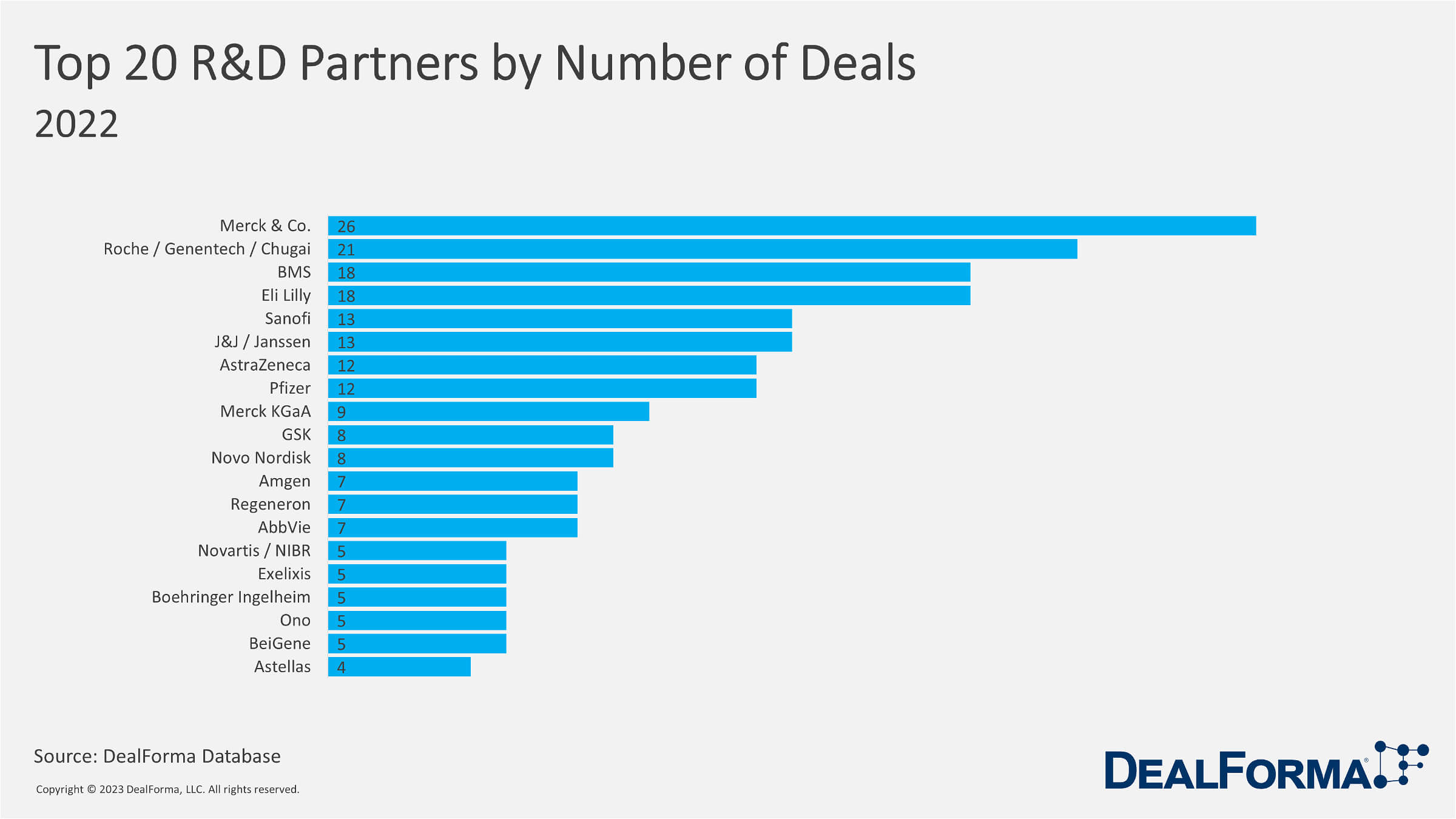
Many approved drugs were partnered with 70% of the 3,000 drugs in phase III clinical trials come from emerging drug companies, with their share of approved drugs on the market growth. In recent years, the nature of partnerships between biotech and pharmaceutical companies has transformed due to the growing availability of capital in the biotech sector. Biotechs have demonstrated impressive performance in research and development (R&D) and early-stage preclinical development thanks to their ability to focus on specific therapeutic areas. With highly productive R&D, biotechs have consistently maintained pharmaceutical pipelines filled with potential small molecules, novel therapies, advanced treatments, and large molecule biologics, thereby providing significant benefits to pharmaceutical companies. Nevertheless, big pharma frequently lags in innovation and cannot venture into newly developing therapeutic domains, such as oncology and gene therapy. On the other hand, biotechs may lack the funds needed to sustain extended R&D periods and the expertise and resources required for successful late-stage development, clinical trials, and commercialization. Here is where pharmaceutical partnerships become most valuable, as a pharma partner can offer the resources, expertise, and infrastructure necessary to overcome the challenges of clinical development, expand the biotech company’s reach, and even bear the costs of commercialization, making it feasible to produce and distribute the drug on a large scale.
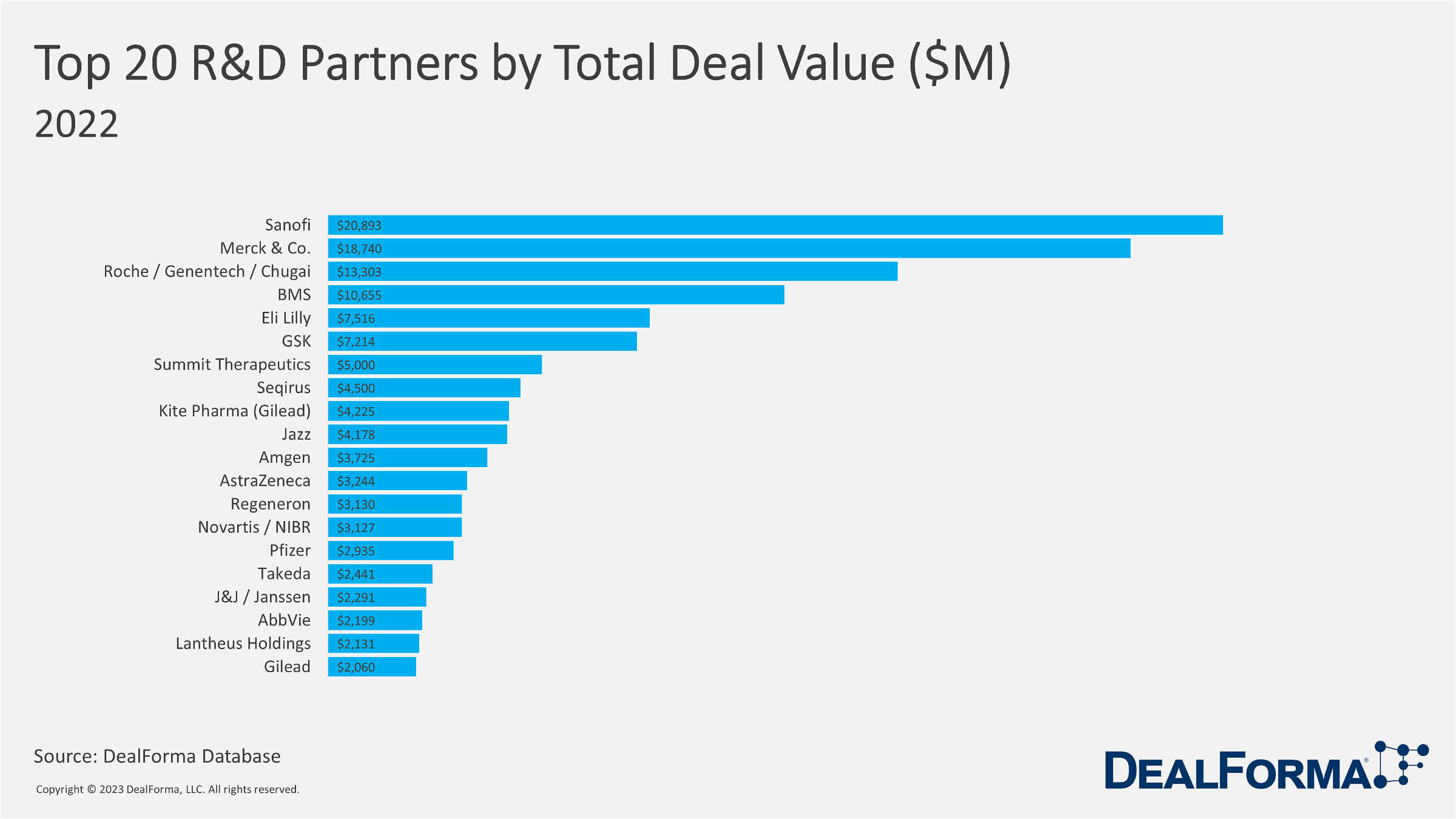
Collaborative partnerships and strategic alliances have been crucial in advancing drug development and improving healthcare outcomes. Companies have joined forces to address a wide range of tasks, from drug discovery to preclinical studies, clinical trials, and obtaining FDA approval, as well as numerous regulatory and legal issues and post-approval marketing efforts. The result has been the introduction of innovative drugs and therapies that positively impact patients’ lives.
Accelerating R&D And Innovation Through Technology Partnerships
The biopharma industry increasingly relies on alliances and partnerships to access external innovation, focusing on sustainable capital allocation in 2022. The value of alliances has been accentuated by the COVID-19 vaccine race, where companies turned to external partnerships to leverage nascent mRNA technology. Major biopharma companies have been deploying more capital towards alliances and partnerships since 2020, with AI-enabled drug discovery and development attracting much interest from Big Pharma through investments, acquisitions, and partnerships.
Large Deal Values In 2022
- AkesoBio / Summit Therapeutics $5.0B
- Arcellx / Kite Pharma (Gilead) $4.2B
- WAVE Life Sciences / GSK $3.5B
- Kelun-Biotech / Merck & Co. $9.5B
- PeptiDream / Merck & Co. $2.1B
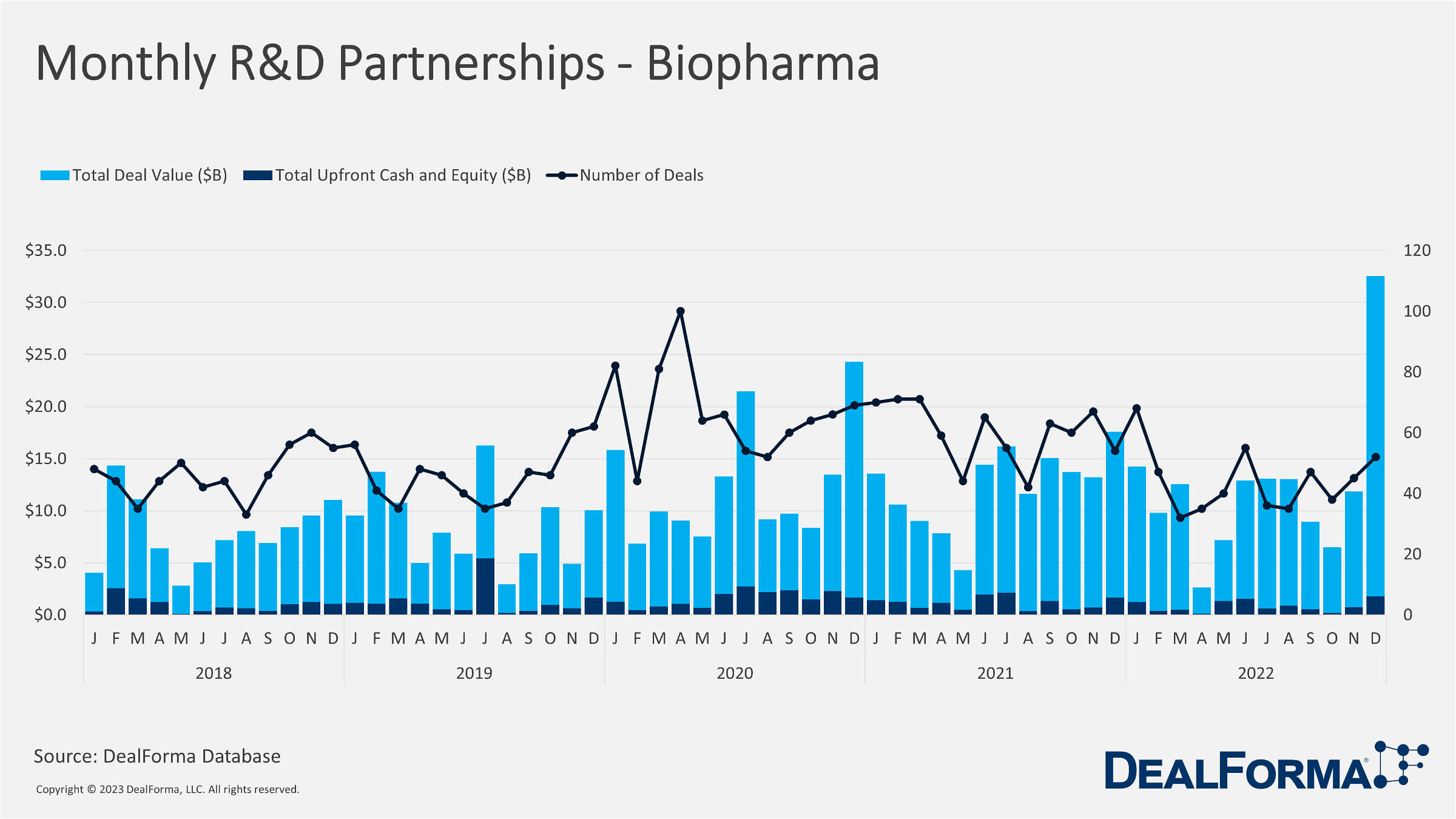

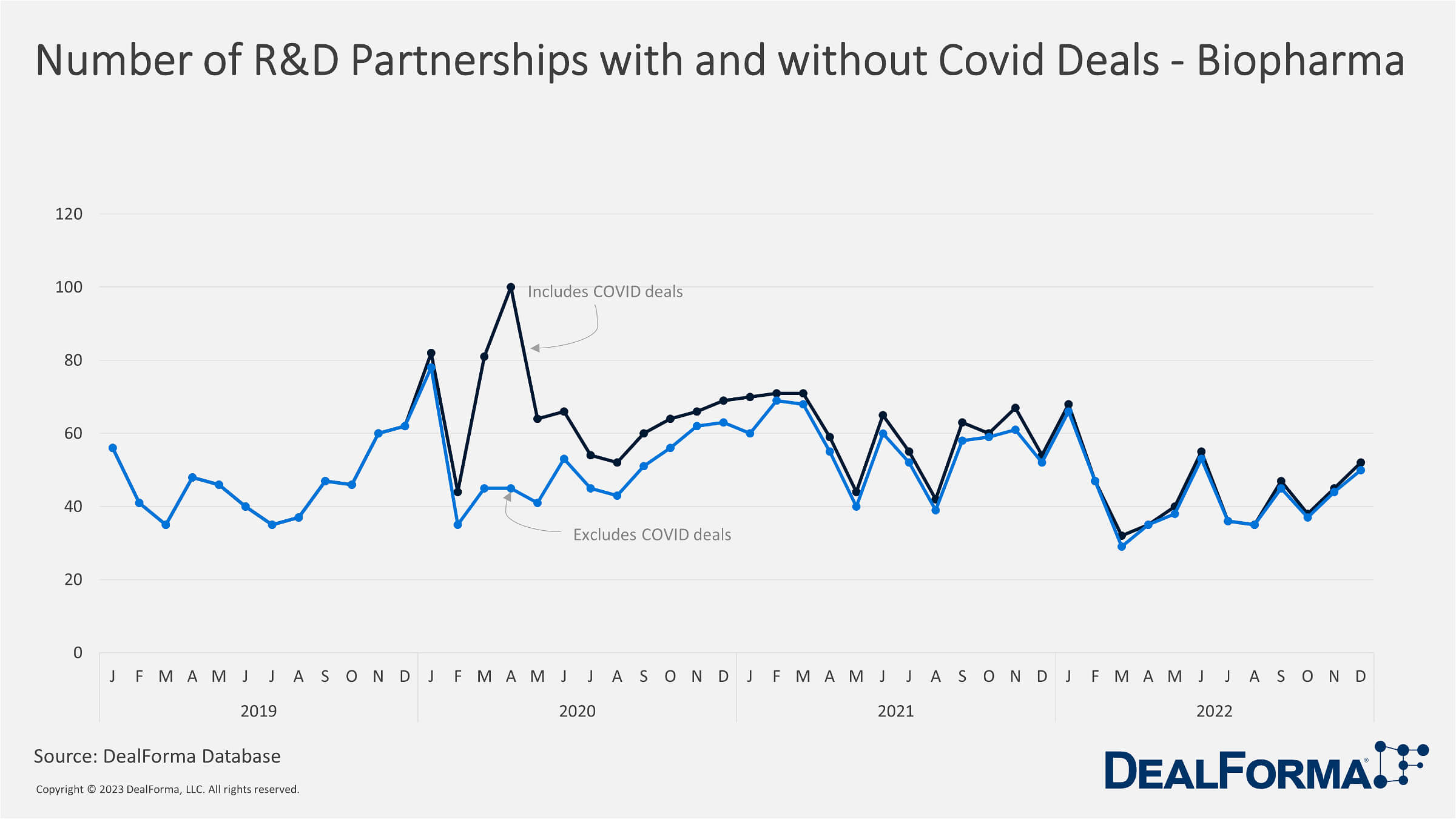
Effective drug development depends on a complex and cooperative ecosystem that brings together multiple parties. It requires sharing information covering all process aspects, from target selection to manufacturing technology. This leads to collaboration between biopharma companies, academia, startups, and biotech firms, keeping the field competitive as innovators seek ways to differentiate their offerings to partners. Consider Pfizer, a leader in the partnering industry, employed a tailored, dual approach during its COVID-19 drug development, where one of its teams focused on partnering with established clinical assets. At the same time, the other seeks out ground-breaking preclinical science and technologies from academia, public-private partnerships, and biotech. The latter team faces several key challenges, including identifying the most promising external opportunities, determining the best collaboration method to meet the needs of potential partners, and transforming these opportunities into robust drug development programs.
Partnerships Using Modern Technologies To Combat Diseases
i. Efficient AI
AI and big data are currently the top technologies used in drug discovery and development, and this trend is expected to continue to increase in the coming years. AI has wide-ranging applications, including genetic risk assessment, disease screening and diagnosis, drug discovery and development, clinical trial design and analysis, precision medicine, and treatment response monitoring. As a result, pharmaceutical companies will continue to invest in this technology. Many pharmaceutical partnerships are utilizing AI at various stages of pharmaceutical R&D.
ii. Digital Technologies
Digital technologies have been rapidly adopted in various biopharma partnerships, and this trend is spreading throughout the pharmaceutical industry to accelerate and reduce costs during the R&D process of new drugs. Utilizing these technologies will provide advantages for small to mid-size partnerships.
iii. Specialized Treatments
Specialized partnerships have emerged in the field of innovative treatment modalities such as Chimeric Antigen Receptor T-Cell Immunotherapy (CAR-T), Natural Killer (NK) Cell Immunotherapy, and Dendritic Cell Immunotherapy (DC Vaccine). Investments in these types of partnerships are anticipated to continue to rise.
Course Of Biopharma Partnerships
- There has been a growing trend of R&D partnerships in the biopharmaceutical industry in recent years. Companies increasingly recognize the benefits of collaborating with other organizations to research, develop, and commercialize new drugs and therapeutic platforms. This trend is driven by several factors, including:
- Growing R&D costs: The cost of researching and developing new drugs and therapeutic platforms has increased dramatically in recent years, making it more challenging for companies to finance R&D efforts on their own.
- Complex R&D processes: The R&D process for new drugs and therapeutic platforms are becoming more complex, requiring expertise in various areas, including genetics, chemistry, and clinical trials.
- Increasing competition: The biopharmaceutical industry is highly competitive, and companies are looking for ways to gain a competitive advantage and bring new treatments to market more quickly.
- Access to modern technologies: Companies are partnering to gain access to innovative technologies, such as advanced genomic analysis tools, that can help them accelerate the development of new treatments.
- Sharing risks and costs: By working together, partners can share the risks and costs of R&D, reducing the burden on any company.
In recent years, there has also been a trend towards more collaboration between biopharmaceutical companies and other organizations, such as academic research institutions and government agencies, as companies seek to leverage the expertise and resources of these organizations. Overall, the trend of R&D partnerships in the biopharmaceutical industry is expected to continue in the coming years as companies look for ways to address the growing challenges of drug development and bring new treatments to market more quickly and efficiently.
Breakthrough Partnership Stance & 2023
The partnership between industry and academia has a long history of fostering innovation and bringing new concepts to clinical settings. Collaborations can take various forms, from straightforward fee-for-service arrangements to fundamental science projects without immediate benefit to a company’s drug development efforts. However, what has recently changed is the increased willingness of entrepreneurial academic scientists to work with industry and the growing recognition by major pharmaceutical companies that these partnerships are crucial, not just desirable. The main drivers behind these partnerships are, from the industry perspective, access to innovative biology and expertise not available within the company, and from the academic side, access to the resources and expertise needed for drug discovery, coupled with a genuine desire to translate scientific findings into practical healthcare solutions.
In conclusion, the biopharma industry has increasingly turned to alliances and partnerships to drive external innovation, focusing on sustainable capital allocation in 2022. The COVID-19 vaccine race has accentuated the value of alliances, with significant biopharma companies deploying more capital towards alliances and strategic partnerships. AI and Big Data are currently the top technologies being used in drug discovery and development, with pharmaceutical companies investing in this technology at various stages of R&D. Moreover, specialized partnerships have emerged in the field of innovative treatment modalities, such as CAR-T, NK cell immunotherapy, and DC vaccine, and investments in these partnerships are expected to increase in the future. By leveraging these partnerships and digital technologies, biopharma companies can accelerate drug discovery and development, reduce costs, and bring innovation in therapies.
